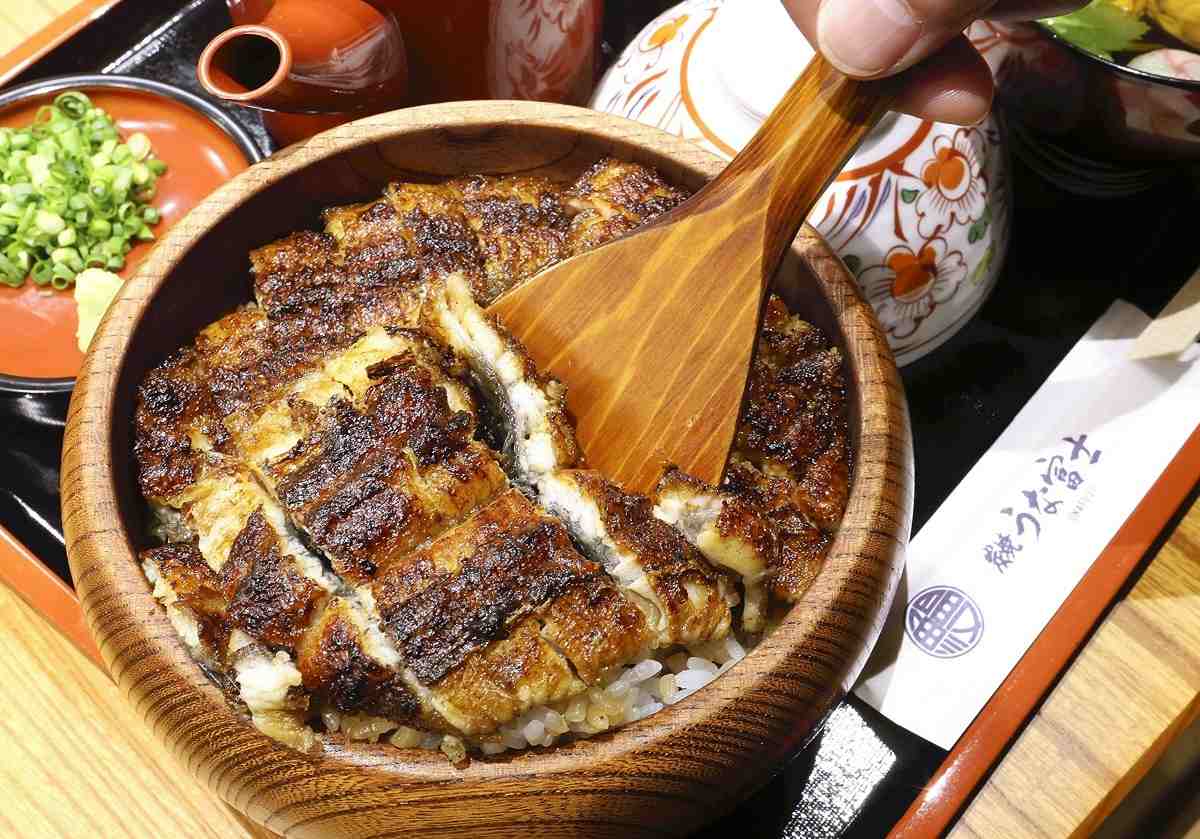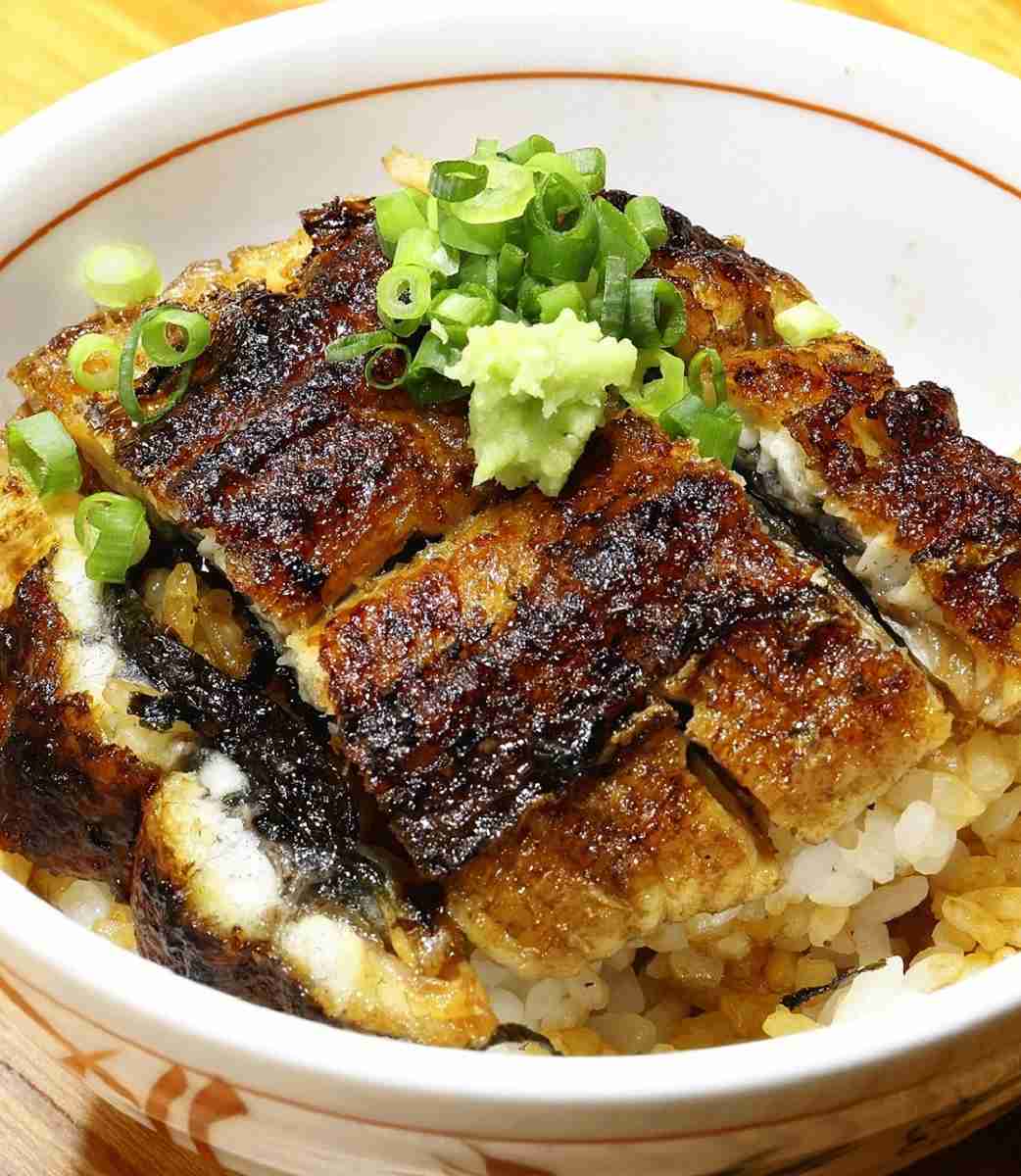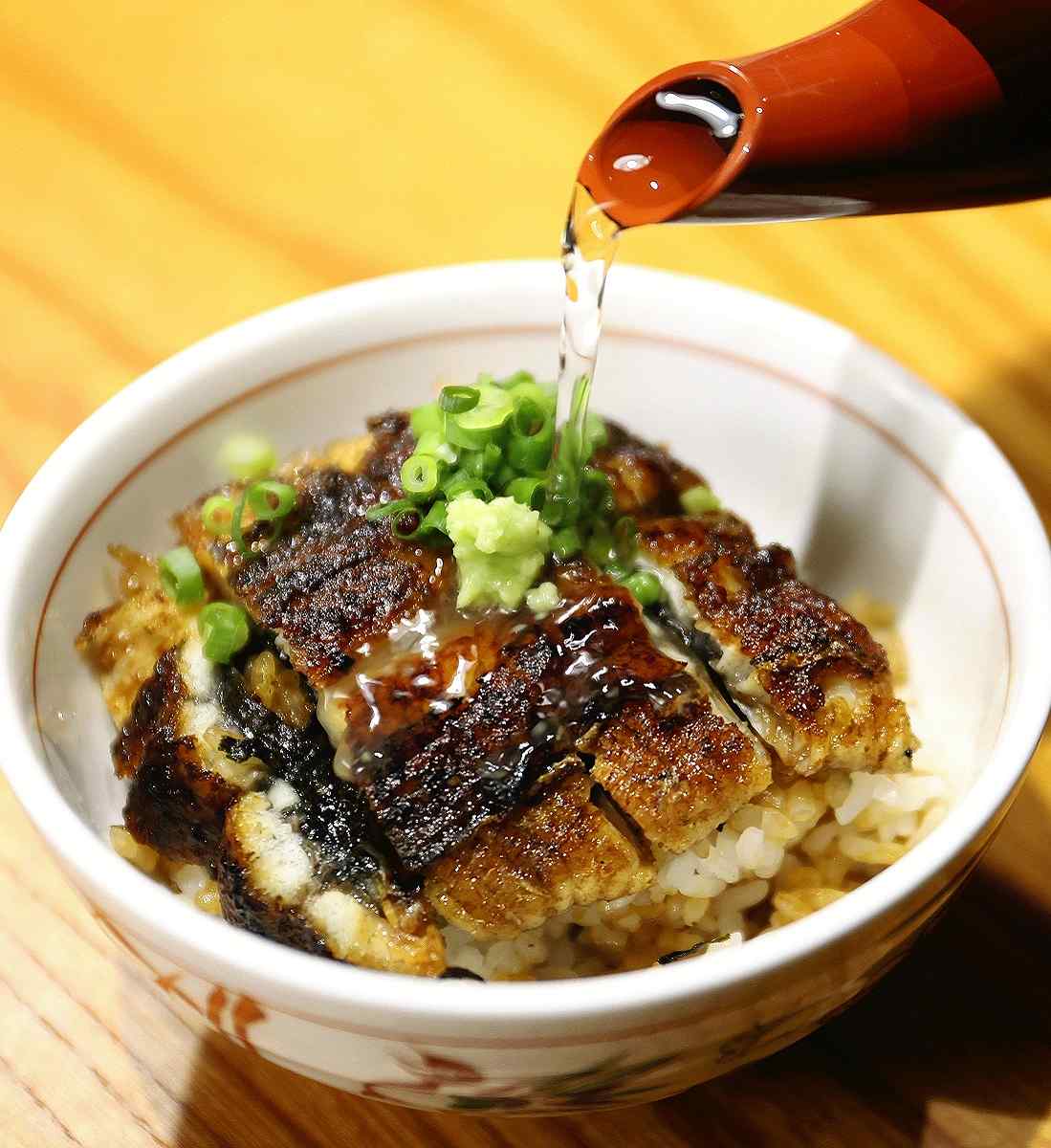Nagoya Restaurant’s Local Grilled Eel Specialty Serves Up Perfect Summer Dish; Michelin Guide-Listed Eatery Still Considered ‘Newcomer’

“Jo,” or high-quality hitsumabushi at the Nagoya Station Taikoguchi branch of Unafuji
13:30 JST, August 18, 2024
NAGOYA — When the heat was bearing down and the temperature topped 35 C, I walked through the doors of Unafuji, a Nagoya restaurant that specializes in eel dishes.


Top: The second serving of hitsumabushi can be eaten with wasabi and green onions.Above: Hitsumabushi served in dashi
It was there that I ate a bowl of “jo,” or high-quality hitsumabushi, which is grilled eel on rice. A whole eel was used to make the dish. The Nagoya Station Taikoguchi branch of the restaurant opened in the city’s Nakamura Ward in April.
When I lifted the lid of the bowl, a bed of rice and grilled eel with its crispy skin greeted my eyes. It was the perfect invigorating summer food.
Hitsumabushi is a well-known Nagoya dish and can be enjoyed different ways. Divide the dish into four servings and eat the first serving as it is. The second serving can be eaten with such additions as green onions and wasabi. The third can be eaten as ochazuke by pouring dashi over it, and the fourth can be eaten in any way.
Hitsumabushi accounts for 55% of all orders at the branch, making it more popular than an unadon grilled eel bowl, the shop’s signature menu item.
According to the branch, hitsumabushi is especially popular among foreign tourists.
‘Newcomer’
Unafuji was established in Nagoya’s Showa Ward in 1995 and is still considered a “newcomer” in the city, which is home to many grilled eel restaurants that were established more than 100 years ago. However, the restaurant has made a name for itself in less than 30 years.
Unafuji was listed in the Michelin Guide’s Tokai edition — which covers Nagoya and its neighboring areas — in 2019 under the Bib Gourmand category, which recognizes eateries that offer excellent food at reasonable prices.
The secret to its success is the efforts made to procure quality eel, which is said to affect 80% of the flavor of hitsumabushi.
Unafuji uses shinko eels, which are eels that are about 6 months old, and their meat is said to be soft and moist. The restaurant carefully selects extra-large eels, each weighing about 330 grams, and grills them to serve to customers.
In addition to purchasing from domestic suppliers, Unafuji also buys eels from Guangdong Province, China, to ensure it has a steady supply throughout the year. The province’s Shunde district, which is hot and humid year-round, is an ideal environment to grow eels. Eels can be landed in the district even during winter, which is not Japan’s eel season.
“In Japan, Chinese food products don’t have the best reputation,” said Hiromichi Matsuoka, 52, president of Nagoya’s Kaburaya Group, which operates the Unafuji restaurants. “However, eels produced in China under proper management are actually high quality. By purchasing eels from China, we’re able to serve hitsumabushi made with shinko eels year-round.”
"Features" POPULAR ARTICLE
-

Sanrio to Open Museum in Yamanashi Pref. Dedicated to Founder, Exhibits Include Hello Kitty, Other Characters
-

Autumn Foliage Surrounds Visitors to Tokyo’s Showa Kinen Park
-

My Daughter No Longer Speaks to Me, But I Want to See Her and My Grandchild
-

Kumamoto: Public Bath Refurbished as Library Where You Can Chat, Take Photos
-

Frozen Vegetables: Demand Rises for Convenient, Tasty Domestic Produce
JN ACCESS RANKING
-

Tokyo Economic Security Forum to Hold Inaugural Meeting Amid Tense Global Environment
-

Keidanren Chairman Yoshinobu Tsutsui Visits Kashiwazaki-Kariwa Nuclear Power Plant; Inspects New Emergency Safety System
-

Imports of Rare Earths from China Facing Delays, May Be Caused by Deterioration of Japan-China Relations
-

University of Tokyo Professor Discusses Japanese Economic Security in Interview Ahead of Forum
-

Japan Pulls out of Vietnam Nuclear Project, Complicating Hanoi’s Power Plans
























